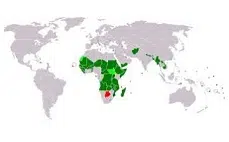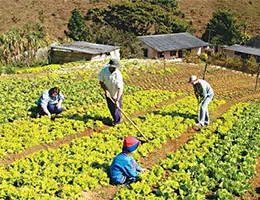 The Greek word geōgraphía derived from the Latin term geographĭa , the etymological antecedent of geography . This concept is used to name the science that is dedicated to describing the planet Earth .
The Greek word geōgraphía derived from the Latin term geographĭa , the etymological antecedent of geography . This concept is used to name the science that is dedicated to describing the planet Earth .
The Royal Spanish Academy ( RAE ) recognizes in its dictionary various branches of geography, which focus on specific issues within the field of study of this science: political geography , historical geography , botanical geography and zoological geography , among others. . The list made by the RAE , however, is incomplete since specializations are missing; among them, economic geography .
This branch of geography is dedicated to the study of the location, distribution and organization of economic activities in space . Experts in this matter analyze what activities are carried out in each region, how they are developed, how they affect the environment, etc.
It is common for geographical space to influence economic activity. According to the geographical characteristics at their disposal, human beings usually develop certain practices to obtain their livelihood. At the same time, it will organize and exploit natural and spatial resources in one way or another.
When analyzing the functioning of a free market economy , it is usually considered that prices are established from the game of supply and demand. However, many experts highlight the importance of taking into account the spatial variable to include the cost of transporting the product to the consumer and vice versa, which can be measured in money and time. In this framework, economic geography is very important to optimize said analysis.
The way in which products are generated also varies according to the relationship that exists between the economic activities on which they depend and the space in which they are carried out. In this context, we speak of several economic sectors that comprise a classification established in accordance with the criteria adopted by each country. These sectors are defined below.
Primary sector
 This is the set in which all those activities that are characterized by the extraction of goods and natural resources are grouped. Among the most common are fishing, agriculture, mining, water harvesting, energy production and forestry. All of them are closely linked to the rural area and make up the fundamental supply of inputs and resources for the rest of the activities.
This is the set in which all those activities that are characterized by the extraction of goods and natural resources are grouped. Among the most common are fishing, agriculture, mining, water harvesting, energy production and forestry. All of them are closely linked to the rural area and make up the fundamental supply of inputs and resources for the rest of the activities.
Secondary sector
This group includes the activities through which the goods and resources extracted from the natural environment are transformed. They are processes developed mainly in cities, where the workforce and potential consumers exist. It covers all economic activities that are related to the transformation of food products, as well as other goods.
Tertiary sector
The third sector that economic geography recognizes includes activities that result in non-tangible products, although this does not mean that they are not used as part of economic transactions. For example, we can mention banking activities, tourism, transportation and commerce. Since their nature is not material , they are not linked to specific spaces, although in urban spaces they present a better display.
Quaternary sector
In this economic sector we find services considered intellectual, such as development , innovation and research. Until a few years ago, it was included in the tertiary sector, although since it has become so important it was necessary to differentiate it from this. The industries that we find in the quaternary sector are information technology, high technology and telecommunications, in addition to education, scientific research and consulting.
